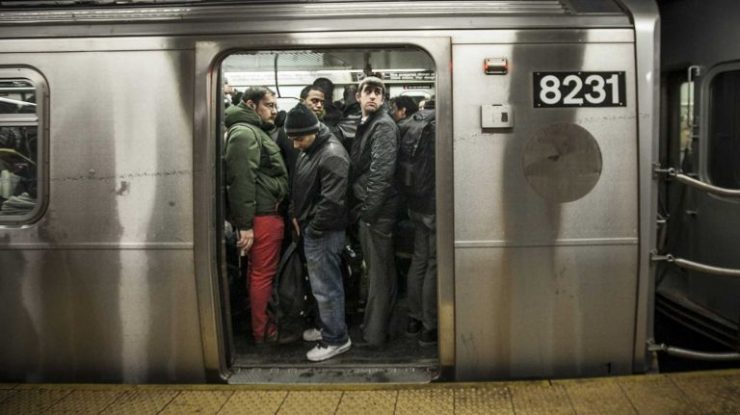The MTA would happily provide more details on its massive $51.5 billion capital plan — but not until it’s approved and fully funded.
The transit authority is currently looking for the city to contribute $3 billion toward its next capital plan, the five-year spending blueprint for mega-projects bringing the likes of new subway cars and buses, subway elevators and signaling technology.
But at City Council hearing Monday, MTA officials said they wouldn’t be able to outline timelines for projects until after the funding is committed and the plan is finally approved.
“We barely have any details about this capital plan,” said Council Speaker Corey Johnson, during a committee hearing on the MTA’s proposed 2020 to 2024 capital plan.
“The council negotiates and approves the city’s announce budget we can’t make decisions on a $3 billion magnitude based on a few estimates and a Powerpoint presentation,” he continued.
The MTA’s executive responsible for carrying out the plan, Chief Development Officer Janno Lieber, said the authority was taking was still mapping out how to execute projects as efficiently as possible and that more details wouldn’t come until about 60 days after the plan is approved.
Lieber reasoned that construction involving the installation of new subway signal equipment or certain maintenance in the system will likely require shutdowns of service, and that the MTA wants to get as much work done as possible during those outages by “bundling” projects together.
“We may have to do some shutdowns, some outages, and we must make sure that every time we do an outage in the transit system … that we get every piece of work done that can be done during that outage,” Lieber said.
The authority is currently putting together a bundling analysis — a new approach to capital plan work, Lieber said.
“I’m completely willing to commit to transparency in how do we finalize that bundling process and most important from your standpoint, how do we track it going forward,” Lieber said. “Because we do want to be more transparent.”
The MTA historically does not actually complete its five-year plans within five years and still has work to do from its last three plans. Advocates have worried that the 2020-2024 plan, the authority’s largest ever, wouldn’t be completed until years later.
Lieber argued that the bundling and a greater use of design-build would speed construction, though he has stated that the MTA only aspires to allocate all project funding within five years—not actually complete all the work in that window.
The authority also took heat for the exorbitant costs of capital construction, which studies have shown is far more expensive than work in peer cities. And Council members also grilled the MTA on its separate operating budget and how it relates to the policing of “quality of life” offenses in the subway.
Against pushback from transit and social justice advocates, the MTA has embarked on a controversial hiring of 500 new MTA police officers to focus on fare evasion, homelessness and worker safety. The new hirings would cost the MTA $249 million over the next four years and come as the MTA faces “dire” budget gaps in the off years, according to MTA CFO Robert Foran.
Manhattan Councilman Ydanis Rodriguez wondered if the MTA would be better spending that money on expanding the city’s Fare Fair program offering half-fare MetroCards to low-income New Yorkers. Stephen Levin, a Brooklyn councilman, suggested the MTA spend that money on improving poor social services for the homeless.
“When we’re policing [the homeless] without actually giving them the resources that they need, or want, or will use, it is a recipe for bad outcomes–bad outcomes meaning arrests, people being handcuffed in the middle of a subway station,” said Levin.
MTA officials said the were sensitive to the housing crisis and other societal forces that push New Yorkers to seek shelter in the subways, but that something has to be done.
“On the one hand, you’re trying to be humane and Christian to people who are really vulnerable, who have not chosen this way of life, probably. A lot of them have psychological challenges…and need help — they certainly don’t need to be arrested,” said Transit President Andy Byford.
“Equally, I can’t just ignore a mess all over the train,” Byford continued. “The E train, I ride it regularly, it’s like a traveling hostel.”




































